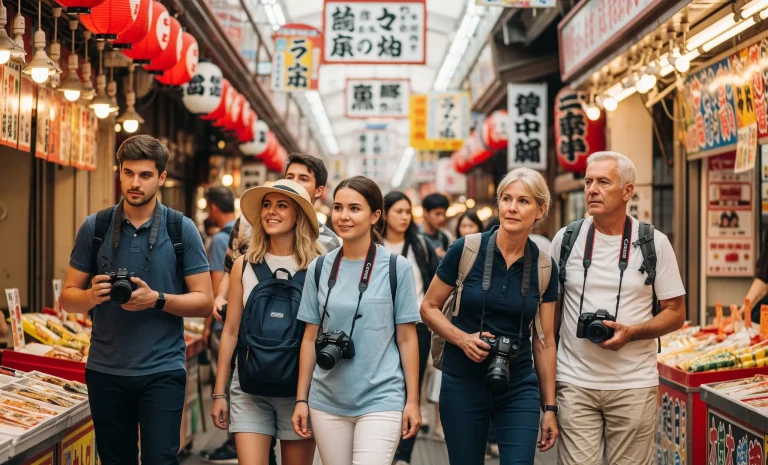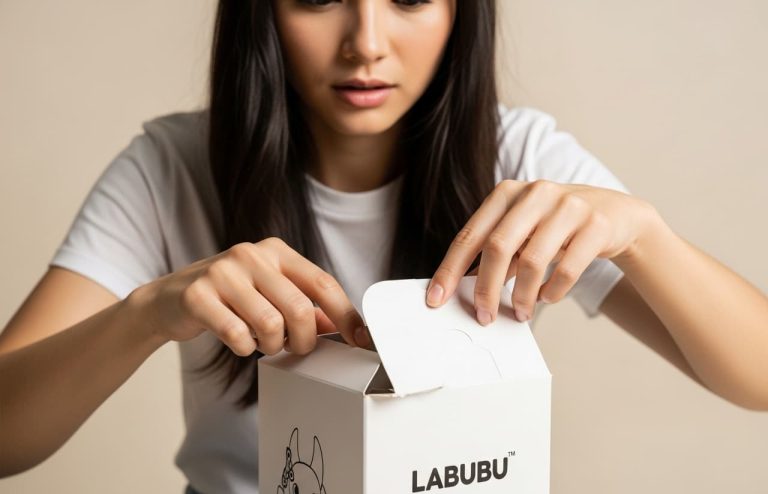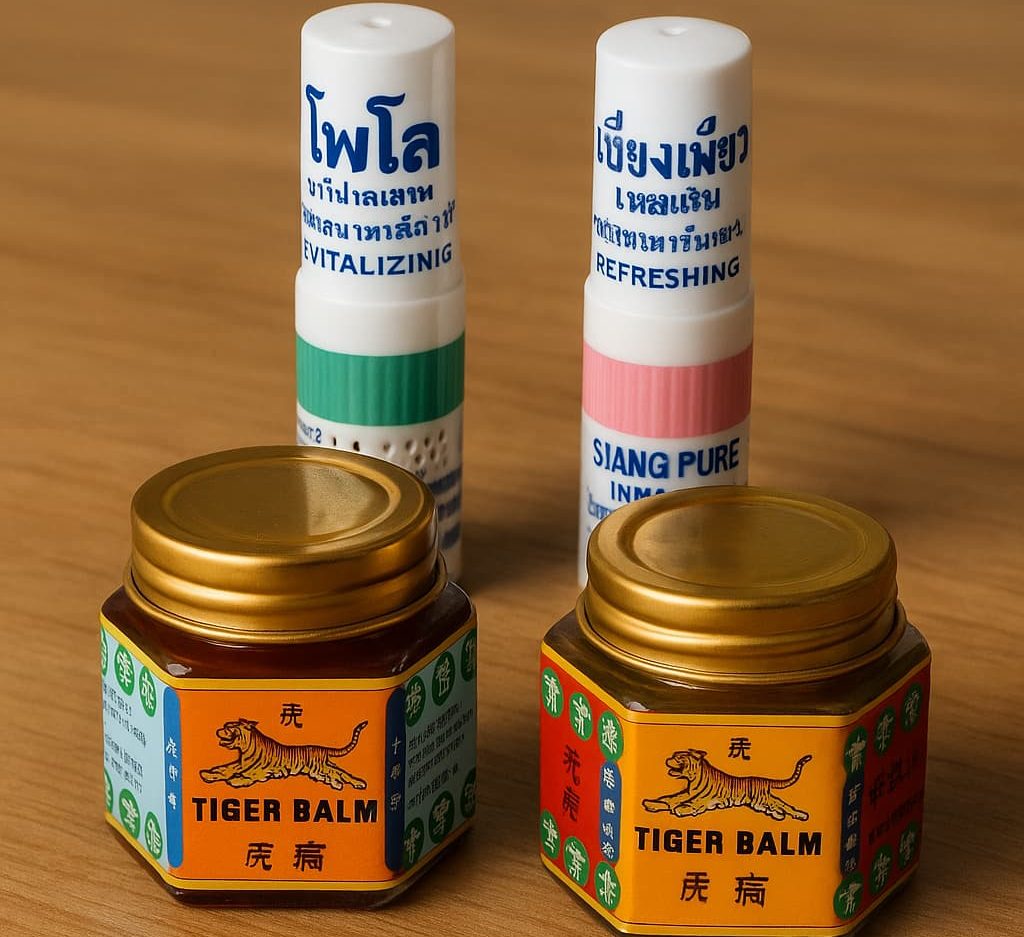
Stepping into Thailand, one is immediately enveloped in a symphony of sensory experiences. The vibrant hues of silk, the intricate carvings of ancient temples, the bustling energy of the markets, and of course, the tantalizing aromas of Thai street food. Yet, amidst this rich tapestry, there exists a subtle, yet profound, aromatic allure that speaks to the heart of Thai wellness traditions: their beloved inhalers and Tiger Balms.
These humble items are more than mere commodities; they are cultural touchstones, embodying centuries of traditional wisdom and a holistic approach to daily well-being. I’ve often found myself drawn to these simple remedies, understanding their deep roots in everyday life here in Chiangmai. This article invites you on a journey to explore why Thai inhalers and Tiger Balms stand out, delving into their historical origins, the philosophy behind their use, and their enduring place in the Land of Smiles.
Herbal knowledge, passed down through generations, forms the cornerstone of this wisdom. Practitioners of traditional Thai healing have long understood the intricate properties of local plants, barks, roots, and essential oils, harnessing them for a variety of purposes aimed at restoring harmony. It’s a philosophy that speaks to mindful living, encouraging an awareness of one’s internal state and external environment. This deep respect for natural remedies and the body’s innate capacity for self-regulation is beautifully encapsulated in the common usage of Thai inhalers and Tiger Balms.
“Health is a state of complete harmony of the body, mind and spirit. When one is free from physical disabilities and mental distractions, the gates of the soul open.”
The Wonders of Tiger Balms and Inhalers
Let us now delve into the specific practices associated with these aromatic wonders, beginning with the ubiquitous Thai inhaler, known locally as ‘Ya Dom’. These compact, often colourful, cylindrical tubes are a common sight across Thailand, tucked into shirt pockets, purses, or held discreetly to the nose. Typically, a Ya Dom contains a blend of potent aromatic oils, predominantly menthol, camphor, and eucalyptus, sometimes complemented by other refreshing essential oils like peppermint or clove. The design is simple yet ingenious: a small cotton wick saturated with the aromatic mixture, housed within a plastic or metal casing. Some variations also feature a liquid component that can be dabbed onto the temples or under the nose. 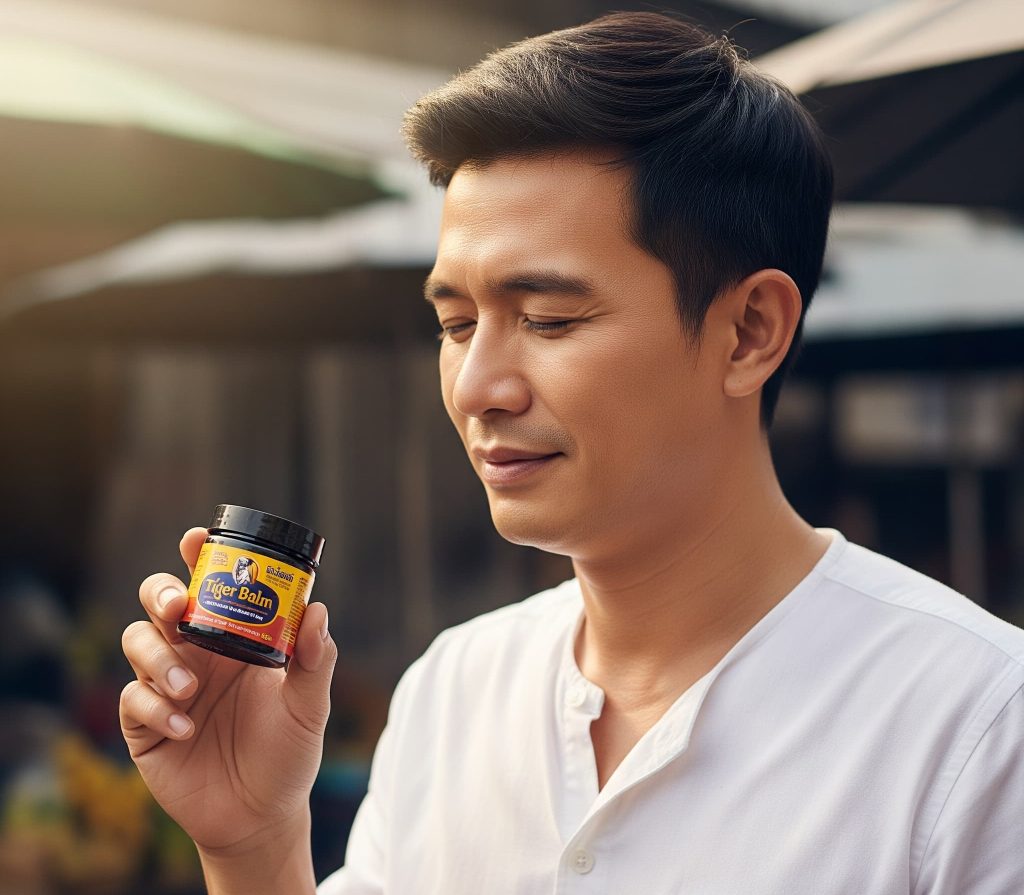
The application is straightforward: one simply uncaps the inhaler and takes a gentle breath through the nostrils, allowing the invigorating vapours to clear the senses. For topical application, a small amount of the liquid can be carefully applied to pulse points or areas like the forehead. The intended focus during this practice is often immediate relief or refreshment – a quick mental reset. It’s a moment of mindful breathing, bringing a burst of cool clarity to the mind, especially potent in Thailand’s humid climate. While the specific scientific mechanisms of action are a subject of modern research, the traditional understanding points to their ability to soothe the senses and promote a feeling of openness within the respiratory passages.
Next, we turn our attention to Tiger Balm, a product whose distinctive aroma and iconic packaging are instantly recognizable globally, yet its roots and widespread use are deeply embedded in the Asian, and particularly Thai, experience. While its origins trace back to Myanmar and Singapore, Tiger Balm became an integral part of traditional wellness across Southeast Asia, including Thailand, where it is used extensively for its perceived soothing qualities. It comes in various formulations, most commonly as a solid balm in small glass jars, and distinguishes itself primarily by its ‘red’ and ‘white’ variants, each with slightly different compositions and traditional applications.
The primary ingredients in Tiger Balm include camphor, menthol, cajuput oil, clove oil, and peppermint oil, all derived from natural botanical sources. The ‘red’ balm often contains more cajuput and clove oil, giving it a stronger, warming sensation, while the ‘white’ balm, with more menthol and eucalyptus, typically offers a cooler, more gentle effect. To use, a small amount is simply scooped out with a finger and massaged gently onto the skin over areas of discomfort or tension. The practice involves slow, deliberate circular motions, allowing the warmth from the friction and the balm’s aromatic compounds to penetrate the skin. This ritual of self-massage is not merely about application; it’s an act of mindful attention to the body, an opportunity to connect with one’s physical sensations and encourage a sense of release.
Benefits and Their Remedies
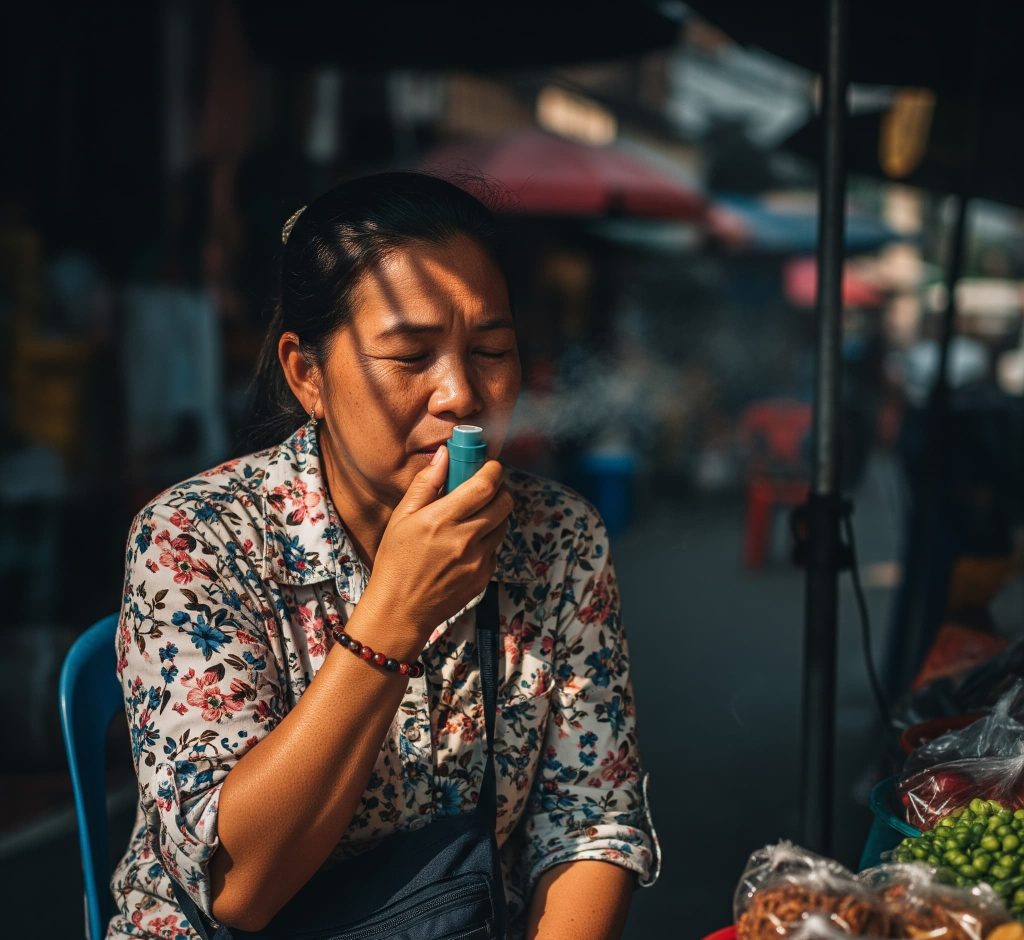
Within their original cultural context, Thai inhalers and Tiger Balms are not seen as miracle cures but as accessible, everyday tools for maintaining comfort, promoting balance, and fostering a sense of well-being. They are part of a broader cultural understanding where minor discomforts are addressed with simple, readily available herbal remedies before they escalate. The inhaler’s purpose is traditionally understood as providing an invigorating lift, helping to clear the head during moments of fatigue or stuffiness, or offering a cooling sensation in the heat. It’s a quick sensory pick-me-up that supports focus and alertness.
Tiger Balm, on the other hand, is cherished for its perceived ability to soothe muscle tension, ease joint discomfort, or provide a warming comfort to stiff areas. Its role is to support the body’s natural processes, promoting a feeling of ease and relaxation after physical exertion or prolonged periods of stillness. These are simple forms of wellness journey, often employed within the home or workplace without ceremony, integrated seamlessly into the daily routines of millions. They are also incredibly affordable and widely available, making them democratic tools for self-care, shared amongst family and friends.
I’ve personally found immense comfort in these humble remedies. I recall countless times, after a long day exploring temples or a spontaneous scooter ride through the countryside, gently massaging Tiger Balm into tired muscles. It wasn’t a medical treatment, but a simple ritual that brought a profound sense of ease and release, helping me settle into the quiet of the evening. And for those moments on a bumpy bus ride to a distant province or during a long ferry trip when I might feel a little queasy, the subtle, clean scent of a Thai inhaler has been a reliable companion, offering a refreshing wave that helps keep the mind alert and grounded amidst motion. I have often used inhalers to keep myself awake during long writing sessions or when feeling under the weather during travel. Their affordability and the personal sense of effectiveness they offer make them truly stand out, not just for personal use but as thoughtful gifts for friends and family back home who might appreciate a piece of Thai comfort.
Diving Into Traditions
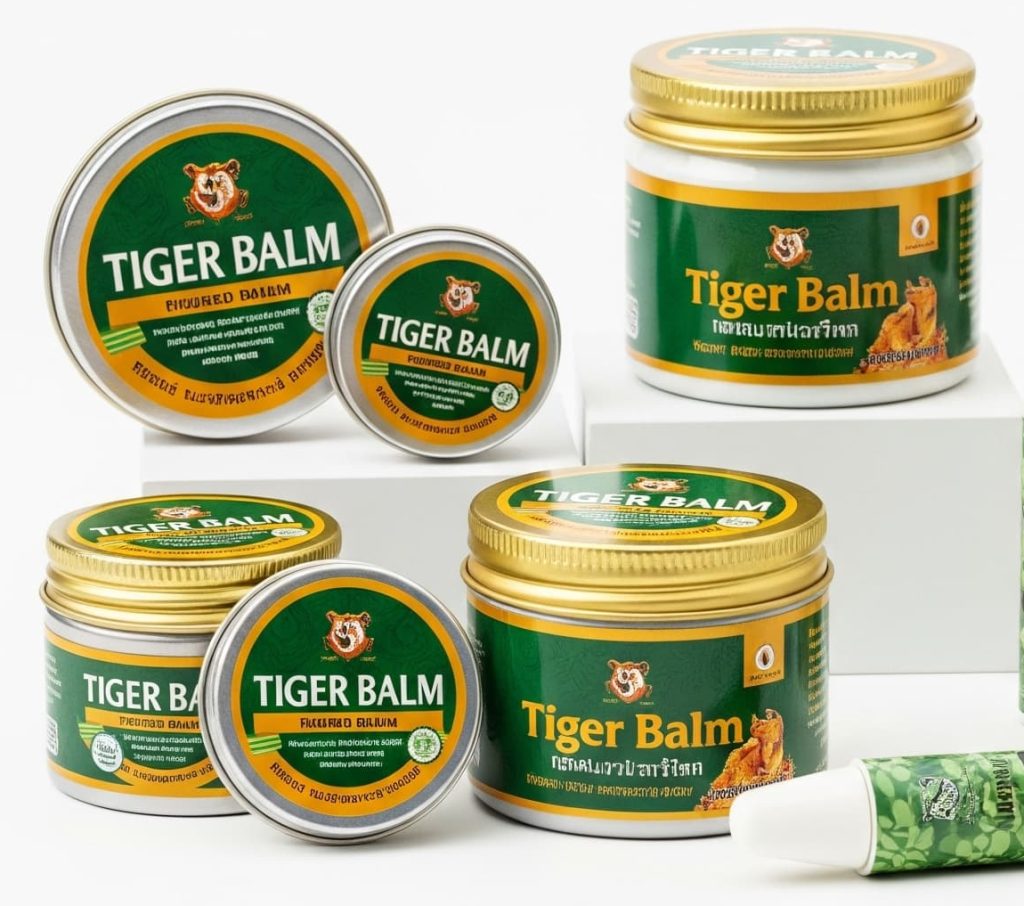
The concept of balance is central here. The use of these balms and inhalers often aligns with the traditional view that the body benefits from regular gentle interventions to prevent imbalances. The pleasant aromas also play a role, influencing the mind and mood through their connection to the olfactory system, a practice recognized in various forms of traditional aromatherapy. From the Thai perspective, these products are not just about addressing a specific discomfort; they are about maintaining a flow of energy, promoting a sense of vitality, and enhancing daily comfort in a gentle, non-intrusive way. This emphasis on holistic wellness aligns with broader Asian wellness practices, including those explored in yoga retreats throughout the region.
It is worth noting that while these products are deeply integrated into daily life in Thailand, the understanding of their effects remains primarily within the framework of traditional knowledge and personal experience. Modern scientific research continues to explore the properties of their botanical components, such as menthol and camphor, recognizing their local effects on sensory nerves and their capacity to create sensations of cooling or warmth that can alleviate discomfort.
For instance, reputable sources like PubChem provide detailed chemical information about ingredients like menthol, revealing the scientific understanding of their properties without making medical claims about the products themselves. The World Health Organization also acknowledges the importance of traditional medicine in global health, emphasizing the need for respectful integration and research, rather than dismissal. The appeal of these traditional remedies lies in their accessibility, their historical use, and the personal sense of relief and comfort they offer to those who incorporate them into their daily rhythms.
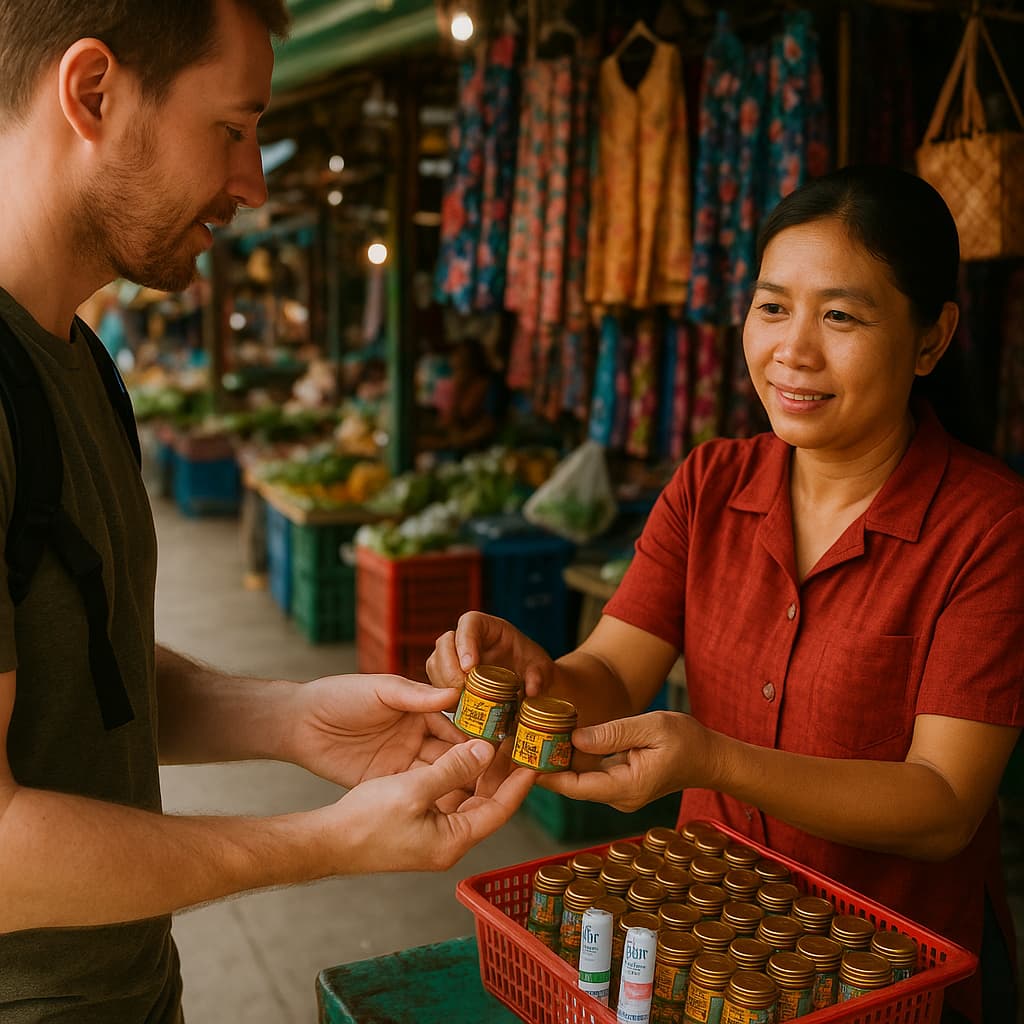
The cultural significance extends beyond individual use. These small items are often purchased in bulk, not only for personal use but also as thoughtful souvenirs or gifts for loved ones. They carry with them a piece of Thailand’s heritage, a tangible representation of its nurturing spirit and the wisdom of its land. When visitors pick up a handful of inhalers or a jar of Tiger Balm, they are not just buying a product; they are partaking in a cultural immersion, bringing home a piece of the aromatic allure that defines the Land of Smiles. Their affordability makes them accessible to everyone, further cementing their status as democratic wellness tools. This makes them perfect tokens to share the warmth and practicality of Thai everyday life with friends and family, reflecting the generosity and community spirit so characteristic of Thai culture.
“Culture is the widening of the mind and of the spirit.”
Parting Thoughts
In conclusion, the aromatic allure of Thailand’s inhalers and Tiger Balms extends far beyond their immediate physical effects. They are emblematic of a profound and respectful relationship with nature, a testament to centuries of accumulated traditional wisdom, and a daily practice of gentle self-care. Their widespread presence speaks volumes about their perceived efficacy and their seamless integration into the lives of the Thai people. For those of us who have embraced the spontaneity of travel and the depth of cultural exploration in Asia, these items become more than just balms or scents; they become reminders of moments of calm, clarity, and connection to a rich heritage.
As you reflect on your own approach to well-being, perhaps there is inspiration to be found in these simple, aromatic treasures. They offer a gentle invitation to pause, to breathe, and to acknowledge the subtle ways in which we can foster harmony within ourselves, much as generations in Thailand have done. It is a testament to the enduring depth and quiet power of these wellness traditions that they continue to enrich lives, one aromatic breath and soothing massage at a time.



